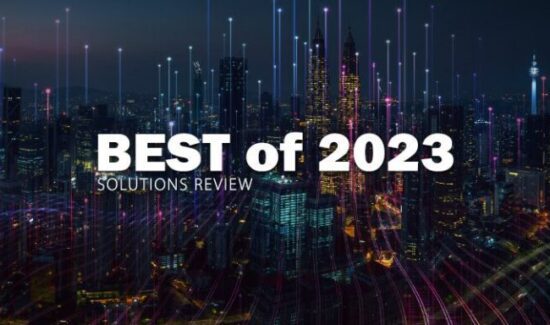Why All Roads Lead to Multicloud—How Organizations Can Stay the Course
Solutions Review’s Contributed Content Series is a collection of contributed articles written by thought leaders in enterprise technology.
A multi-party digital infrastructure like multi cloud is often not an organization’s first choice. It can add complexity and cost for the organization, especially teams tasked with securing and operating clouds, not to mention introduce potential security challenges. However, for many, while multi-cloud may not be an intentional decision, it is inevitable. Shadow IT (51 percent), independent software vendor (ISV) support for different clouds (48 percent) and mergers and acquisitions (M&A) (47 percent) are all contributing factors to the unintentional development of a multi-cloud environment, according to a recent survey. As a result, IT leaders hope to regain control over their digital architectures, pursuing strategies to fully leverage multi-cloud and ensure it is working for, not against, the enterprise to help support and achieve organizations’ business goals.
Taking back control over the multicloud begins with evaluating the issues that have emerged over time. A multi-cloud infrastructure may have been established through M&A, for example, as an acquired organization may operate in a different cloud than its new parent company. To increase the efficiency of the infrastructure, the executive team must first fully assess the current situation. This process involves taking inventory of the organization’s current data and where it is stored, as well as identifying any shadow IT that has developed within the organization. Obtaining full visibility into the organization’s issues, and specifically into the organization’s security posture, is the only way that leaders can resolve them and regain control over the multi-cloud infrastructure. As a result, they will unlock greater agility in the cloud, while also creating common multi-cloud defenses and standards across the organization.
For organizations intentionally looking to adopt a multi-cloud infrastructure, there are several best practices to consider. The first is policy standardization, especially in regard to security. Though many executives may think that multi-cloud security standardization is a myth—58 percent, according to a recent Valtix report—there are steps that can be taken to achieve this. Strategically applying multi-cloud security architecture to enable key visibility and control points will help make significant progress towards making this a reality.
Achieving this requires moving away from the on-premises approach: while many enterprises would place virtual network security appliances in cloud environments, these often fail as appliances are designed for a more static network, while the cloud requires much greater agility. Instead, IT leaders should look to protect cloud workloads and data in a more universal, cloud-native manner that works with a dynamic network environment.
Another key practice is to secure across the multi-cloud environment. This may be easier said than done for many: only 57 percent of IT leaders responded to a survey that they were confident multi-cloud security is achievable using their current resources and technology. However, multi-cloud security continues to be a top priority, with organizations desiring comprehensive protection across multiple cloud platforms. To make this possible, leaders should pursue a robust cloud security posture management (CSPM) strategy deployment, which will help organizations understand what they have and as a result, what kind of risk it carries, informing future actions that must be taken.
More than likely, when evaluating the organization’s current security infrastructure, IT leaders will find a piecemeal security architecture, cobbled together over the last decade as the organization’s cloud infrastructure developed. This is a less secure approach than an integrated strategy – due to both gaps in policy and enforcement, and ultimately, operationally unsustainable. While securing a multicloud
environment can be a complex undertaking, approaching cloud security with networking as a critical component will help unify the cloud and its security strategy. Keeping security and networking linked will help prevent existing security controls from being bypassed, establishing a stronger overall cloud service for the organization.
Though the move to a multi-cloud infrastructure may be unintentional, the architecture can indeed benefit the enterprise in the long-term. To realize its full potential, however, leadership must minimize the risks it presents. This requires a comprehensive and consistent approach across all clouds and all types of workloads, which includes both security and networking. As a result, teams will be able to ensure the multicloud is working for, not against, their business, providing a strong and secure distributed architecture to maximize their ROI and achieve their ultimate goals.
















